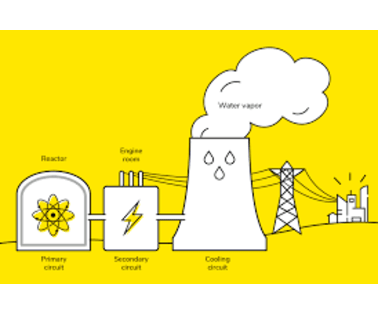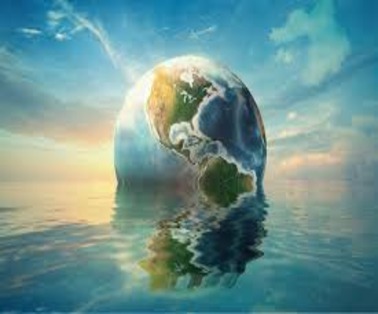Japan adopted a new policy promoting greater use of nuclear energy to ensure a stable power supply amid global fuel shortages and to reduce carbon emissions, in a major reversal of its phase-out plan following the Fukushima crisis.
Key Points
- Under the new policy – which describes nuclear power as “a power source that contributes to energy security and has a high decarbonisation effect” – Japan will maximise the use of existing reactors by restarting as many of them as possible and prolonging the operating life of aging ones beyond the current 60-year limit.
- The government also said the country will develop advanced reactors to replace those that are decommissioned.
- Anti-nuclear sentiment and safety concerns rose sharply in Japan after the 2011 Fukushima disaster, and restart approvals have since come slowly under stricter safety standards.
- Utility companies have applied for restarts at 27 reactors in the past decade. Seventeen have passed safety checks and only 10 have resumed operations. That was in line with Japan’s earlier plan to phase out nuclear energy by 2030.
- The Economy and Industry Ministry has drafted a plan to allow extensions every 10 years for reactors after 30 years of operation while also permitting utilities to subtract offline periods in calculating reactors’ operational life beyond the current 60-year limit.
- The plan was approved by the Nuclear Regulation Authority, Japan’s nuclear watchdog, paving the way for the policy to be adopted.
- New safety inspection rules still need to be compiled into law and approved by Parliament.
- Most nuclear reactors in Japan are more than 30 years old. Four reactors that have operated for more than 40 years have received permission to operate, and one is currently online.
- The policy paper says Japan will also push for the development and construction of “next-generation innovative reactors” with safer features to replace about 20 reactors now set for decommissioning.
Background

Issues

Nuclear Disaster
- The International Atomic Energy Agency (IAEA) defines a nuclear radiation accident as “an event that has led to significant consequences to people, the environment, or the facility”.
- The three major nuclear disasters of the world are
- Chernobyl disaster
- Fukushima disaster
- Three-mile Island incident
- The Chernobyl Disaster of Russia on April 26, 1986, is the worst nuclear accident in history. No.4 reactor at the Chernobyl Power Plant lost control and exploded, resulting in a large amount of radiation into the atmosphere.
- The Fukushima Disaster in 2011 at Fukushima Daiichi Nuclear Power Plant, Japan, was an aftereffect of the Tohoku earthquake and Tsunami in Japan. There were no reported deaths following the disaster.
- The Three Mile Island incident took place in Unit 2 reactor in Pennsylvania, United States. It is a major accident in the commercial nuclear power plant industry of the US.
- Nuclear Accidents result in Acute Radiation Syndrome (ARS), skin burns, cancer, and cardiovascular diseases in humans
India’s Nuclear Energy
- Nuclear energy is the fifth-largest source of electricity for India. India has over 22 nuclear reactors in 7 power plants across the country which produces 6780 MW of nuclear power. The 7 power plants are:
- Tarapur Atomic Power Station (TAPS), Maharashtra.
- Kudankulam Nuclear Power Station (KKNPS), Tamil Nadu
- Kakrapar Atomic Power Station (KAPS), Gujarat.
- (Kalpakkam) Madras Atomic Power Station (MAPS), Tamil Nadu.
- Narora Atomic Power Station (NAPS), Uttar Pradesh.
- Kaiga Generating Station (KGS), Karnataka.
- Rajasthan Atomic Power Station (RAPS), Rajasthan.
- The public sector entity, Nuclear Power Corporation of India (NPCIL), is responsible for designing, building, commissioning and operating nuclear power reactors in the country.
- NPCIL operates under the Indian government’s Department of Atomic Energy (DAE).
India’s Initiatives Regarding Nuclear Energy
- Three-stage Nuclear Power Programme: India has consciously proceeded to explore the possibility of tapping nuclear energy for the purpose of power generation. In this direction athree-stage nuclear power programme was formulated by Homi Bhabha in the 1950s.
- The Atomic Energy Act, 1962: The Atomic Energy Act, 1962 was framed and implemented with the set objectives of using two naturally occurring elements Uraniumand Thorium as nuclear fuel in Indian Nuclear Power Reactors.
- Pressurised Heavy Water Reactors: In December, 2021, the Government of India informed Parliament about building ten indigenousPressurised Heavy Water Reactors (PHWRs) to be set up in fleet mode and had granted “in principle approval” for 28 additional reactors, including 24 to be imported from France, the U.S. and Russia.
- Nuclear power reactors at Jaitapur in Maharashtra: Government has given in-principle (first step) approval for setting up of six nuclear power reactors at Jaitapur in Maharashtra. Jaitapur would be the world’s most powerful nuclear power plant. There would be six state-of-the-art Evolutionary Power Reactors (EPRs) with an installed capacity of 9.6 GWe that will produce low carbon electricity.
To Download Monthly Current Affairs PDF Click here
Click here to get a free demo
Everything About CLAT 2025



